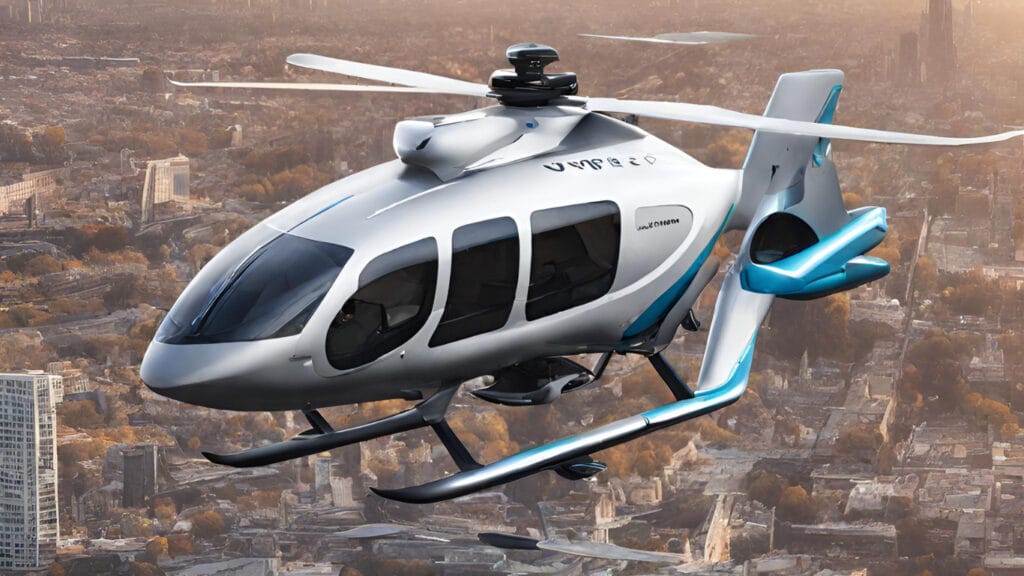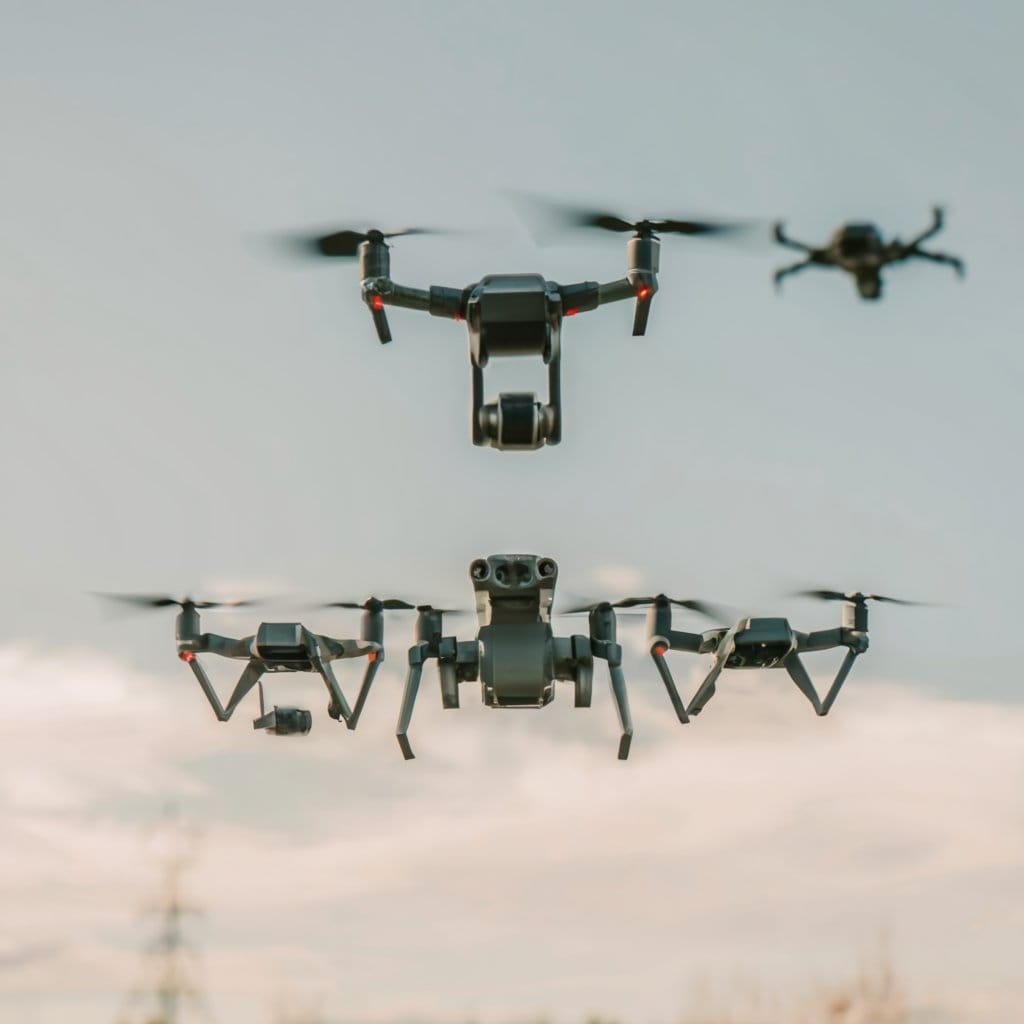What is Urban Air Mobility (UAM)
Urban Air Mobility (UAM) refers to using small, highly automated aircraft for transporting passengers or cargo at lower altitudes within urban and suburban areas. These vehicles are designed to navigate the complexities of urban environments, offering a new dimension to transportation solutions.

Significance of UAM in the Contemporary Transportation World
The significance of UAM in the contemporary world of transportation is paramount. It is need of the hour to address urban congestion, reduce travel times, and enhance overall mobility. As cities expand and face increasing traffic challenges, UAM presents an opportunity to revolutionize how people and goods move within metropolitan areas. UAM has the potential to alleviate ground-level congestion, offering a more efficient and time-saving mode of transportation by introducing aerial mobility. This paradigm shift aligns with the evolving needs of modern society, emphasizing speed, sustainability, and adaptability in urban transportation networks.
Historical Context of UAM Development
The concept of UAM dates back to the early 1900s, with the development of the earliest predecessors of UAM aircraft. Early ideas of “flying cars,” such as Glenn Curtiss’s Autoplane, set the stage for envisioning air travel within urban and suburban areas. However, it wasn’t until recent decades that advancements in technology and changing transportation needs propelled the idea of UAM into a tangible and evolving reality. The historical evolution reflects a gradual shift from visionary concepts to the practical exploration of aerial mobility in contemporary urban landscapes.
Innovations in Propulsion Systems for UAM
Innovations in propulsion systems are pivotal to the realization of UAM. Recent advancements in electrical propulsion have become a cornerstone for sustainable aviation. It distributed electric propulsion and automation drive innovation, offering more efficient and environmentally friendly alternatives. Blown lift technology and the use of electric motors contribute to creating vehicles that can navigate urban landscapes with precision and reduced environmental impact. These propulsion innovations not only redefine the possibilities of UAM but also address the challenges of urban congestion and sustainability in the contemporary transportation ecosystem.
Infrastructure Requirements for UAM Implementation
Implementing Urban Air Mobility (UAM) poses significant challenges requiring robust infrastructure development. The key challenges include:
Energy Storage Development
Energy storage enhancement is vital for sustainable mobility, ensuring better operational freedom for UAM vehicles.
Autonomous and Complex Software
The evolution of UAM demands sophisticated software solutions that incorporate autonomy and complexity to ensure seamless operations.
Electric Propulsion and Energy Storage
UAM’s success relies on advancements in electric propulsion systems and energy storage technologies to support efficient and eco-friendly urban aerial transportation.
Integration of Air Taxis and Drones into Urban Airspace
Efficiently integrating air taxis and drones into urban airspace involves addressing various challenges and implementing innovative solutions:
Air Taxi Implementation Plan
Regulatory bodies, like the Federal Aviation Administration (FAA), play a crucial role in establishing implementation plans to integrate air taxis and advanced air mobility (AAM) into the national airspace.
Innovative Air Traffic Management
New airspace users require innovative air traffic management concepts and solutions to ensure safe and efficient operations in urban environments.
Addressing Environmental and Economic Impact
The growth of urbanization demands strategies to mitigate the environmental and economic impact caused by various types of transport, emphasizing the need for thoughtful implementation.
Global Initiatives and Pilot Programs
Urban Air Mobility (UAM) is gaining momentum worldwide, with numerous global initiatives and pilot programs shaping its future:
International Collaboration
International air safety regulators participate in discussions and shape the path to advanced air mobility progress.
EU’s UAM Initiative
The European Union’s Urban Air Mobility (UAM) initiative is making strides, with cities like Ingolstadt pioneering air taxi and organ transport pilot programs.
Global Regulatory Initiatives
Regulatory bodies are initiating pilot projects that outline the next generation of mobility in cities.
Success Stories in Urban Air Mobility
UAM is a rapidly growing field that aims to revolutionize transportation by enabling urban air travel. As the technology advances, numerous success stories are emerging in this domain. These stories highlight the potential of UAM to transform the way we travel and bring innumerable benefits to commuters, including faster and more efficient transport, reduced traffic congestion, and lower emissions. From successful test flights of air taxis to the development of innovative air mobility solutions, there is much to look forward to in Urban Air Mobility. Let’s discuss the leading regions in this advancement.
Singapore: Leading the Way in UAM Infrastructure
Singapore has emerged as a global leader in Urban Air Mobility (UAM) infrastructure development, showcasing operational maturity and commitment to advancing air mobility:
Operational Maturity
Singapore has demonstrated exceptional operational maturity in UAM, making it a world leader in the successful and growing deployment of drone technology for urban transportation.
Infrastructure Investment
The city-state has heavily invested in building the necessary infrastructure to support UAM, including vertiports and efficient air traffic management systems.
Government Support
Singapore’s government has shown a proactive approach, providing support and regulatory frameworks to facilitate the integration of UAM into its transportation ecosystem.
Germany: Pioneering Autonomous Air Taxis
Germany stands at the forefront of autonomous air taxi development, contributing significantly to the evolution of Urban Air Mobility:
Cutting-Edge Technology
German companies are pioneering the development of autonomous air taxis, incorporating cutting-edge technologies such as electric propulsion and automation.
Research and Innovation
The country’s commitment to research and innovation has positioned it as a hub for companies and startups focused on developing and testing autonomous aerial vehicles.
Regulatory Framework
Germany has been actively working on regulatory frameworks to ensure the safe integration of autonomous air taxis into its airspace.
United States: UAM Trials in Major Cities
The United States is at the forefront of conducting UAM trials in major cities, testing and shaping the future of urban transportation:
Trials and Demonstrations
Several major U.S. cities are conducting trials and demonstrations of UAM, focusing on air taxis and other aerial mobility solutions.
Collaboration with Industry
The U.S. government collaborates closely with industry stakeholders to create an environment conducive to UAM testing, innovation, and regulatory development.
Public Acceptance Initiatives
Efforts are underway to build public acceptance, recognizing that citizens’ confidence is crucial for successfully deploying UAM in the country.
These three regions collectively contribute to the global landscape of Urban Air Mobility, each showcasing unique strengths and advancements in infrastructure, technology, and regulatory frameworks.
Future Trends in UAM
UAM is rapidly evolving, driven by advancements in Electric Vertical Takeoff and Landing (eVTOL) vehicles, Artificial Intelligence (AI) integration, and a commitment to sustainable practices.
Electric Vertical Takeoff and Landing (eVTOL) Advancements
eVTOL air taxis are expected to be safer, quieter, and more cost-effective than traditional vertical takeoff and landing aircraft, contributing to enhanced urban mobility. Ongoing research and development in eVTOL technology are fostering innovations in energy efficiency, materials, and design to improve performance and address urban transportation challenges.
Artificial Intelligence (AI) Integration in UAM Systems
AI is pivotal in enabling independent operations of UAM vehicles, contributing to enhanced safety and efficiency. Advanced AI-driven air traffic management systems are being developed to manage the complex airspace associated with UAM efficiently, ensuring smooth coordination between vehicles and minimizing congestion. AI in aviation is a hot topic for the enthusiast due to the latest developments.
Sustainable Practices in UAM Technology
UAM stakeholders, such as Eve Air Mobility, are actively committed to environmental sustainability, incorporating strategies to minimize the ecological impact of UAM operations. Sustainable urban transportation systems are being developed using innovative technologies, including electric propulsion, to reduce emissions and promote eco-friendly UAM solutions.
In summary, the future of UAM is characterized by technological advancements in eVTOL vehicles, AI integration for autonomous operations, and a strong emphasis on sustainable practices to create environmentally friendly urban transportation solutions.
Urban Air Mobility (UAM) Market Analysis
UAM is a dynamic industry with significant growth projections and substantial economic impacts on transportation industries.
Market Size and Revenue Growth
The UAM market is expected to experience substantial growth, with estimates ranging from USD 3.8 billion in 2023 to USD 28.5 billion by 2030, indicating a remarkable CAGR of 33.5% during this period.
CAGR and Market Expansion
Projections suggest a CAGR of 30.2% from 2023 to 2029, emphasizing the rapid expansion and adoption of UAM solutions globally.
Global Market Dynamics
The global UAM market is anticipated to grow from $3.01 billion in 2021 to $8.91 billion by 2028, showcasing a CAGR of 16.77% during the forecast period.
Comprehensive Market Analysis
In-depth market reports covering 2023 to 2030 provide comprehensive analyses of size, market share, and industry trends, aiding in understanding the UAM landscape.
Economic Impact of UAM on Transportation
Industries Revenue Generation: UAM is expected to contribute significantly to the transportation industry’s economic landscape, generating substantial revenue and fostering economic development.
Job Creation and Economic Growth
The growth of UAM is likely to create new job opportunities and spur economic growth in related sectors, including manufacturing, technology, and services.
Technological and Industrial Advancements
UAM’s economic impact extends beyond direct revenue, influencing technological advancements and industrial progress within the broader transportation ecosystem.
In summary, the UAM market is poised for remarkable growth, with projections indicating substantial economic contributions and transformative impacts on transportation industries, including revenue generation, job creation, and fostering technological advancements.
Shaping the Future of Urban Air Mobility: A Collaborative Endeavor
Urban Air Mobility (UAM) is at the forefront of transforming transportation paradigms. UAM initiatives have taken off globally, with 64 towns and cities participating in “bottom-up” programs, reflecting the widespread interest and implementation of UAM technologies.
The future potential of UAM lies in its disruptive impact, similar to how ride-sharing services transformed transportation behaviors. Advanced aerial mobility and UAM have the potential to reshape the way people and goods move, offering unique solutions to urban congestion. Successful UAM integration requires collaboration, emphasizing that new concepts must be integrated into urban mobility for UAM to realize its full potential.
Addressing challenges such as airspace integration, regulatory frameworks, and existing air traffic management systems necessitates collaborative efforts. Solutions emerge through joint endeavors to pave the way for UAM implementation. In conclusion, the current state and future potential of UAM reflect its rapid adoption globally. At the same time, collaboration is the linchpin in overcoming challenges and steering UAM toward a transformative future.



